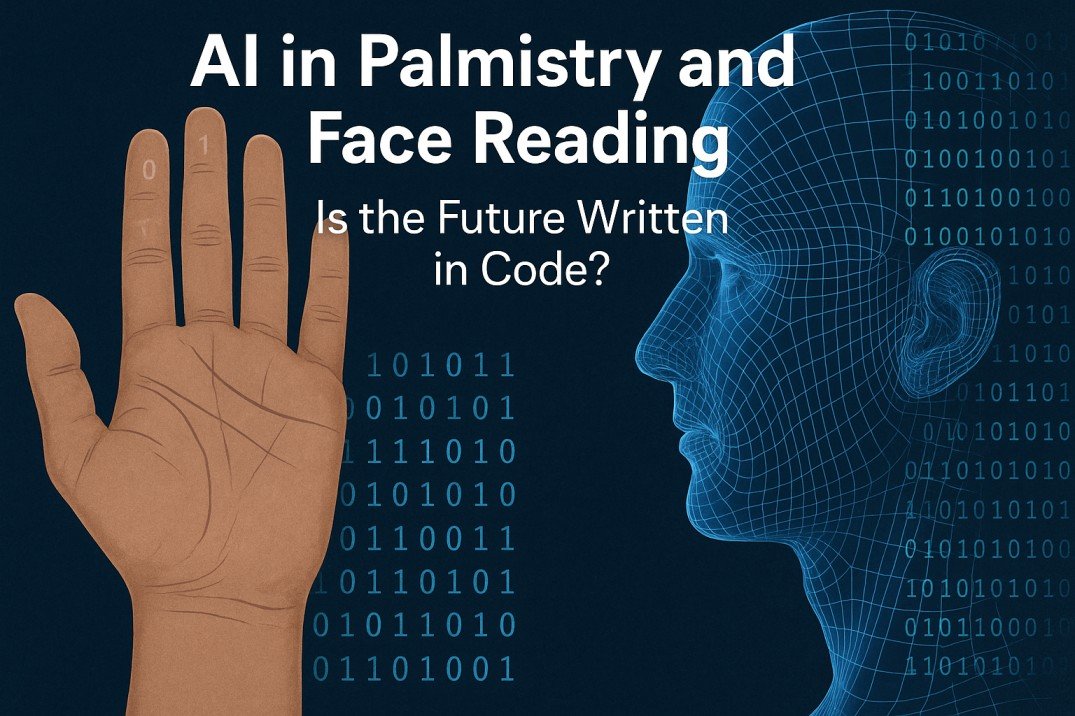


In an age where artificial intelligence is redefining what machines can perceive and interpret, even the ancient art of palmistry and face reading is being given a technological facelift. Once confined to mystics and spiritual readers, these age-old divination techniques are now entering a new era. Algorithms are learning to decode the lines of your hand and the features of your face. But can the essence of such spiritual interpretations truly be captured in code?
Let’s explore how AI is entering the realm of palmistry and face reading—and what this digital shift means for the future of intuitive arts.
Palmistry, or chiromancy, is the practice of interpreting the lines, shapes, and mounts of the hand to predict one’s personality, destiny, and potential life events. Practiced for thousands of years in India, China, and Greece, palmistry has relied heavily on intuition and symbolic analysis.
Face reading, or physiognomy, studies facial features to deduce character traits, emotional patterns, and even future paths. In ancient Chinese and Ayurvedic traditions, the face was considered a mirror of the soul, with every wrinkle and shadow telling a story.
Now, these symbolic systems are being reimagined in the digital space.
Using high-resolution image processing, AI can now scan palm prints and facial structures with exceptional accuracy. Machine learning algorithms are trained on thousands of hand images and facial datasets, allowing them to detect patterns in line lengths, hand shapes, facial symmetry, and micro-expressions.
For example, apps like Scan Your Future or AI Palmist use smartphone cameras to analyze users’ palms and faces within seconds, offering instant personality insights and predictions.
AI models powered by deep learning are capable of recognizing and categorizing subtle differences in features. In palmistry, the heart line, life line, and fate line can be analyzed using convolutional neural networks (CNNs). In face reading, the algorithm may evaluate the proportion between the eyes and eyebrows, jawline angles, or nose curvature.
These AI models are not merely identifying shapes; they are associating them with emotional and psychological tendencies, learned from vast training data.
Once the analysis is complete, AI uses natural language generation (NLG) tools to convert complex data points into readable interpretations. Just like an astrologer gives you a personalized reading, these systems are now capable of producing entire reports written in engaging, human-like language.
AI offers lightning-fast analysis. What once took a skilled reader years to perfect can now be performed by a mobile app in under a minute. This makes these mystical tools more accessible to the global population.
With access to vast datasets, AI systems can compare your palm or face against millions of samples. This data-backed approach allows for pattern recognition beyond human capacity.
AI can process age, gender, emotional tone, and even stress indicators, tailoring each reading to an individual in a way that’s personalized yet automated.
These apps open the door for users worldwide to access traditions that might have once been geographically or culturally limited.
While AI can analyze physical traits, it lacks the intuitive and spiritual sensitivity of a trained palmist or face reader. The deep emotional resonance, personal connection, and intuitive insights often offered in a live reading are currently irreplaceable.
There is a risk of users treating algorithmic readings as absolute truths. Without spiritual guidance or context, individuals may make decisions based solely on mechanical interpretations.
Uploading face and hand images raises serious privacy questions. Many apps do not clarify how this biometric data is stored or used. Ethical design and transparency must be prioritized.
These ancient systems are deeply embedded in cultural nuances. By reducing them to code, there’s a risk of misrepresenting or oversimplifying spiritual and symbolic meanings.
Despite AI’s efficiency, a lingering question remains: can artificial intelligence truly understand the karmic or energetic aspects behind palmistry and face reading? While algorithms can identify and classify, they cannot yet grasp the metaphysical significance or interpret the spiritual meaning of a person’s life path.
However, AI can serve as a powerful tool—one that complements, rather than replaces, traditional methods. By acting as a first step, it might encourage users to seek deeper wisdom from experienced practitioners.
Future applications may include:
Emotion-Sensing Palmistry: Devices that analyze hand temperature, pulse, or tension for a deeper reading.
AR Face Scanning: Augmented reality overlays showing lines, zones, and chakra points on the face.
AI + Astrology Integration: Combining natal charts with palmistry and face reading for multidimensional life analysis.
Voice + Facial Emotion Sync: Apps that analyze your tone and facial expressions simultaneously for intuitive readings.
AI in palmistry and face reading is not a replacement for tradition, but a digital lens through which we can re-experience ancient insights. By merging technology with spiritual arts, we open new doors to self-discovery and reflection. However, it is crucial to remember that these tools must be used wisely—with a balance of curiosity, respect, and discernment.
The future may well be written in code, but the soul behind the lines and the eyes still belongs to the human spirit.